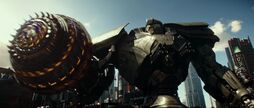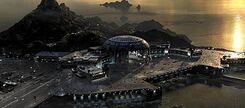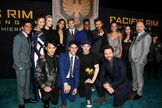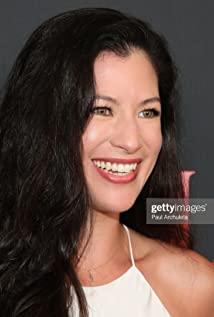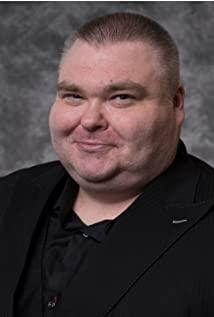"Pacific Rim" is a film directed by Guillermo del Toro, one of Mexico's three heroes. It tells the story of humans building giant mechs and fighting monsters that emerge from wormholes at the bottom of the Pacific Ocean. Toro is known as the "Monster Director". Various monsters and mechas are often frequent guests in his films, and black elements are often used appropriately in his films. "Pacific Rim" is such a film. Although the box office results are not ideal, it has won an excellent reputation among fans of sci-fi, mecha, monsters and other fan groups. "Pacific Rim: Uprising" (later referred to as "Pacific Rim 2") is a sequel to "Pacific Rim", released in 2018 and directed by Steven S. Dinette. It is a typical Hollywood film. Compared with "Pacific Rim" five years ago, its special effects production process has been greatly improved, and the details of mecha and monsters are also more refined, but the film did not achieve the expected effect, and the reputation has also dropped significantly. , this article aims to find out the reasons for the decline in the reputation of "Pacific Rim 2" by comparing the two films from the perspective of play and image style.
play structure
The two films have similarities in terms of play, and in general, they belong to a mode of hero regeneration, that is, the original hero loses his hero status due to trauma, and the crisis forces the hero to reluctantly carry a heavy burden and interact with the hero who needs the help of the hero. People go through hardships together, and in the end, the hero is influenced by the person who needs his help and truly regains his heroic identity to overcome the enemy who has traumatized him. For example, in "Pacific Rim", the male protagonist no longer drives the mecha due to the tragic death of his brother, the rear defense wall is destroyed, and the male mecha pilot returns. Show the current state of the world; at the midpoint, the heroine loses the qualification to drive the mecha, and the turning point is that the monster attacked, all the mechas dispatched failed to resist, and the hero and heroine had the opportunity to fight on the field; after the battle was won, the assistance of monster research progressed; The monsters attack again, and the mechas attack. This is the second plot point; finally, the bottom of the sea is decisive and the passage is blown up. It can be said that the overall structure does not reflect a relatively delicate structure, and even the character establishment is still somewhat imperfect, such as the hero's transformation is not strong enough, the trauma performance is insufficient, the heroine has no transformation, and the performance of overcoming difficulties is insufficient. Last but not least are those mechs.
In "Pacific Rim 2", first the male protagonist's father died, and the male protagonist spent ten years in decadence; the male protagonist and the female protagonist were forced to go to the mecha training base to avoid the crime. This is the first plot point; then the male protagonist and the base staff The relationship between the characters began to be introduced, and Mori Mazi's death made him begin to take the initiative to change, which is also the key link one; the middle point is to defeat Hei Yaoshi; then the base is attacked, monsters appear, and the villain is revealed; the protagonist and the driver officially fight monsters, The protagonist completes the formal transformation, which is a comprehensive treatment of the second plot point and the second key link; the last is the climax of fighting monsters, and the male and female protagonists cooperate in a series of accidents and win. In general, the characters in the story do not change, or the characters change abruptly, especially the heroine, and it is not easy to empathize. And there are still a lot of script details:
Detail 1: Relocate the attitude and power of American corporate giants towards the military and politicians to China.
Detail Question 2: Most of them speak Chinese using English grammar and word usage.
Detail 3: Some actions occur without premise or explanation. For example, Shao Liwen did not allow Newt to contact Gottlieb but did not give an explanation; another example was that the purpose of the attack launched by Hei Yaoshi was weak, and Mori Mazi only expressed her disapproval of drones in the conversation with the male protagonist, but there were no details. It shows that Shao Liwen would know; again, why would Mori Mazi know about the island.
Generally speaking, the script structure of "Pacific Rim 2" is similar to that of "Pacific Rim", but the force given to the characterization is relatively small (the characterization of "Pacific Rim" is still relatively insufficient) , and the treatment of Chinese elements in "Pacific Rim 2" is relatively jerky, making the Chinese elements in it more like a Western element in a Chinese coat, which is also one of the reasons why Chinese audiences feel uncomfortable with this film. (There are a lot of comments on the Internet about the problem of Jing Tian's acting skills. It is true that there are some problems with acting skills, but the problems are not all in acting skills. The character setting of "Shao Liwen" in the film itself is already problematic, whether it is identity or Its corresponding behavior, or the setting of lines, etc., are all shaping Chinese characters with Western thinking. The same is true for "General Quan", but he doesn't make many appearances, and his role is not important, so it was ignored.)
image style
The images of "Pacific Rim" are often inseparable from three elements when showing mechas and monsters fighting - water, gorgeous light effects, and darkness - which are often visual elements commonly used in film noir. In film noir, the use of these visual elements can often enhance the expression of the spiritual motif of the film, that is, despair, fear and powerlessness. At the same time, these elements are also highly sculptural elements, especially to create a hard-key image. Therefore, The skillful application of these elements into the film, on the one hand, enhances the performance of the film's spiritual atmosphere, showing the sense of despair, fear, and powerlessness contained in the disaster; The power of the mountain, especially for the metal texture of the mecha, is a wonderful way to set off. In addition, when expressing the battle between the Skua mecha and the Kaiju beast, the director specially chose the slow-motion expression method to enhance the visual perception of the heavy body of the mecha and the monster by reducing the speed and flexibility of the action, thereby enhancing the sense of reality.
In "Pacific Rim 2", the scene is mainly set in "broad daylight", the shape of the mecha and the monster is fully displayed, and the processing of various details is also revealed, and the mecha and The operation device also uses slow motion and low flexibility to show the power of the mecha and monster, but it also enhances some flexibility with the mecha upgrade. Generally speaking, there is nothing wrong with these treatments, but compared with the use of night, water, and colorful lights to shape mechas and monsters in "Pacific Rim", there is less psychological shock and weakening. The mystery of mechas and monsters reduces the texture of mechas and monsters that correspond to terror to a certain extent. This should be one of the reasons why some people criticize "Pacific Rim 2" so much.
Generally speaking, in terms of image style, the two films are different, but there is no difference between them, but the first film is more suitable for showing the "end of the world", which can give the audience a shock and a secret shock from the psychological level. At the same time, it is in line with the situation that humans are in danger and difficult to save themselves; and the second part is more suitable for showing the "counterattack", which mainly satisfies the audience's exploration of mecha and monsters from the visual level, and also means that humans already have and pioneers. The power of the first battle, the monster can not become the symbol of the end of mankind as before. However, it may be that the emotional impact of the first part on the audience is too great, and the emotional blessings make the second part look a bit eclipsed.
Summarize
In general, these two films have no problems with visual processing and special effects processing, and the visual "black style" of the first film also adds a lot to them. However, there are many loopholes in the script of these two films. If the first film can still rely on the visual impact of the screen to make the audience ignore the loopholes in the play, then the visual impact cannot achieve the results achieved by the first film at that time. The second part of the book is to show these loopholes, which should be the reason why it has been criticized. Perhaps because of the production cycle and funding issues, if the third film can be filmed, I hope the script and story can be made more perfect. In terms of quality requirements, the quality requirements have been improved, and there are fewer and fewer examples of high box office and good reputation relying on visual effects alone. Even Marvel movies, each movie has a perfect script and story, and "the pictures are in the picture". The story group that is integrated into the system is also its magic weapon. (Of course, it is not excluded that some high-box-office and good word-of-mouth films rely on some eye-catching visual spectacles.)
View more about Pacific Rim: Uprising reviews



